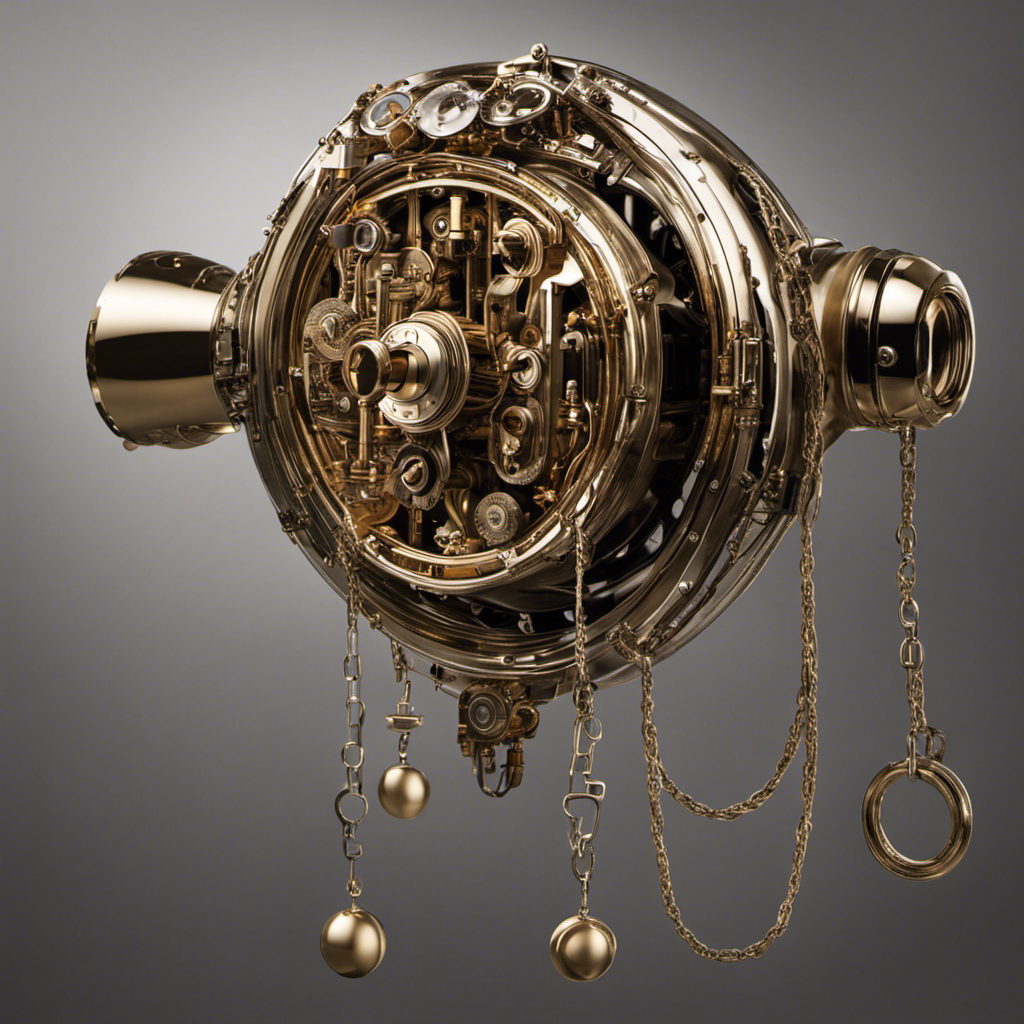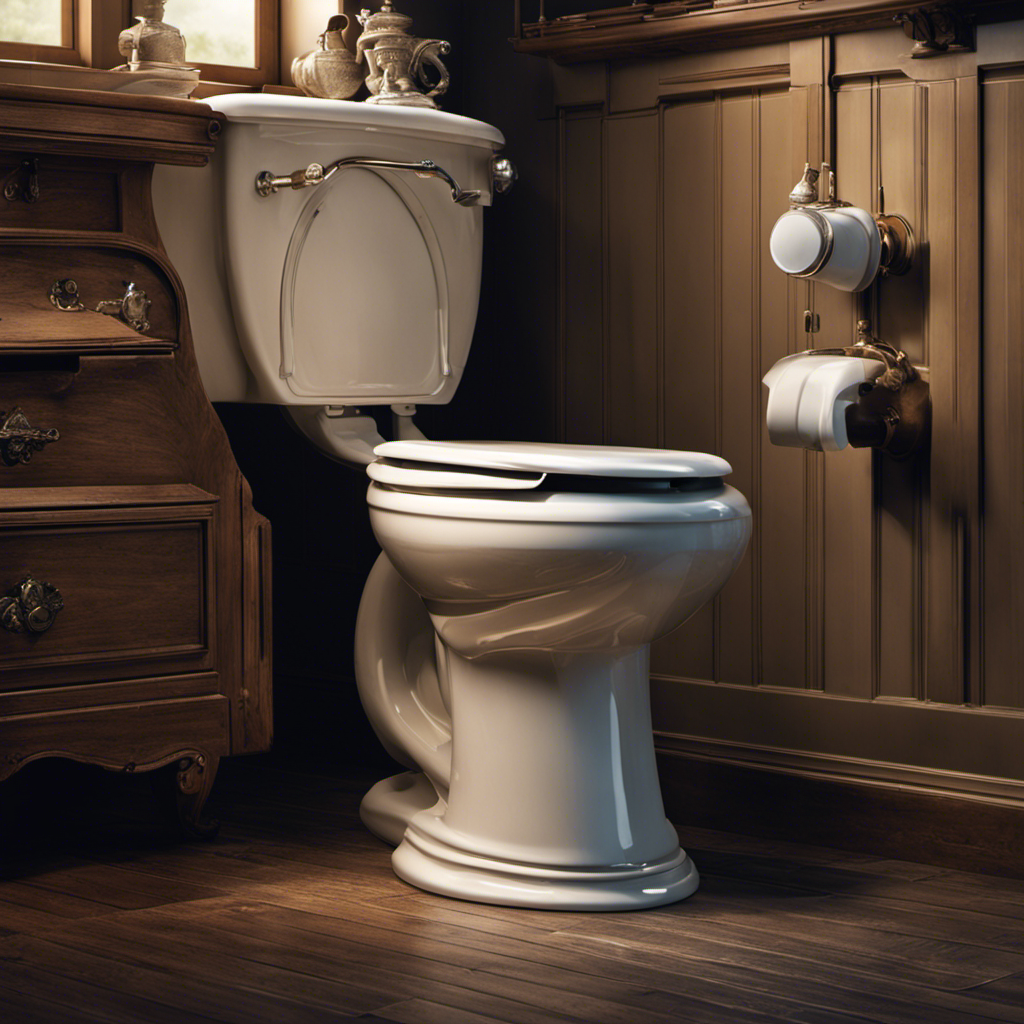So, you think you know how a toilet works? Well, get ready to have your mind blown as we take a deep dive into the inner workings of this everyday marvel.
In this article, we’ll break down the anatomy of a toilet, from its water supply and flushing mechanism to the fascinating functionality of the flush valve and fill valve.
We’ll even explore the intricate waste removal and drainage system.
Get ready to be amazed by the technical precision of your porcelain throne!
Key Takeaways
- The tank of a toilet holds water used for flushing and contains components like the fill valve, flush valve, and flapper.
- The water supply provides a constant flow to refill the toilet bowl after each flush, with the fill valve controlling the water level in the tank.
- The flapper valve seals the flush valve until the flush lever is pressed, allowing water to rush into the bowl. The flush valve then opens to release a large volume of water, creating a siphon for waste removal.
- It is important to regularly inspect and maintain the flush valve, fill valve, and drainage system to ensure proper functionality and prevent issues like clogs or leaks.
The Anatomy of a Toilet
The toilet has several key parts, such as the tank and the bowl. Understanding the anatomy of a toilet is essential for proper toilet maintenance and repair.
Let’s start with the tank, which is usually located at the back of the toilet. It holds the water used for flushing. Inside the tank, you’ll find components like the fill valve, flush valve, and flapper. The fill valve controls the water level in the tank, while the flush valve releases the water into the bowl when you flush. The flapper seals the flush valve, preventing water from continuously flowing into the bowl.
The bowl, on the other hand, is where waste and water are collected. Proper toilet maintenance involves cleaning the bowl regularly and checking for any leaks or cracks.
If you encounter any issues, like a running toilet or a clogged drain, it’s important to address them promptly to prevent further damage and ensure the toilet’s proper functioning.
Water Supply and Flushing Mechanism
Water is supplied to the toilet and the flushing mechanism is responsible for removing waste. To understand how this process works, let’s take a closer look at the components involved.
| Component | Function |
|---|---|
| Water Supply | Provides a constant flow of water to refill the toilet bowl after each flush. |
| Fill Valve | Controls the water level in the tank and shuts off the water supply when it reaches a set point. |
| Flapper Valve | Seals the flush valve and prevents water from flowing into the bowl until the flush lever is pressed. |
| Flush Lever | Initiates the flushing process by lifting the flapper valve, allowing water to rush into the bowl. |
| Flush Valve | Opens to release a large volume of water into the bowl, creating a siphon that carries away waste. |
Proper toilet maintenance and water conservation go hand in hand. By ensuring that all components are functioning correctly, you can prevent leaks and unnecessary water wastage. Now, let’s delve into understanding the role of the flush valve.
Understanding the Role of the Flush Valve
Understanding how the flush valve works is crucial for maintaining a properly functioning toilet. The flush valve is responsible for controlling the flow of water during the flushing process.
To ensure your flush valve is in optimal condition, here are some important maintenance tips to keep in mind:
- Regularly inspect the flush valve for any signs of wear or damage.
- Clean the flush valve regularly to prevent clogs and buildup.
- Check the flush valve seal for any leaks and replace if necessary.
- Adjust the flush valve settings to ensure proper water flow and flush power.
- Troubleshoot common flush valve issues such as weak flush or continuous running.
Exploring the Functionality of the Fill Valve
Exploring how the fill valve functions is essential for maintaining proper water flow in a toilet. The fill valve is responsible for refilling the tank after each flush, ensuring that there is enough water for the next use. To better understand its functionality, let’s dive into its components and their roles.
The fill valve consists of a float, a valve assembly, and a refill tube. When the toilet is flushed, the float drops, signaling the valve to open and allow water to enter the tank. As the water level rises, the float also rises, eventually shutting off the valve when it reaches the desired level. The refill tube then directs the water into the overflow pipe, preventing overflow.
To help you troubleshoot common fill valve issues, here is a table outlining some maintenance tips and solutions:
| Common Issues | Maintenance Tips | Troubleshooting Solutions |
|---|---|---|
| Slow filling | Check for clogs in the valve | Clean or replace the valve |
| Constant running | Adjust the float | Replace the valve assembly |
| Noisy operation | Tighten loose connections | Replace worn-out parts |
| Water hammer | Install an anti-hammer device | Adjust water pressure |
| Water leaks | Inspect for cracks or damage | Repair or replace the fill valve |
Waste Removal and Drainage System
To ensure a properly functioning toilet, you should regularly maintain and clean the waste removal and drainage system. Neglecting this essential task can lead to clogs, backups, and unpleasant odors.
Here are five important steps to follow for proper waste removal and drainage system maintenance:
- Regularly inspect and clean the pipes leading from the toilet to the septic tank or municipal sewage system.
- Avoid flushing non-biodegradable items such as sanitary products, wipes, or paper towels.
- Use septic-safe toilet paper to prevent clogging and promote efficient wastewater treatment.
- Schedule regular septic tank maintenance, including pumping and inspection, to prevent overflow and ensure proper functioning.
- Consider using eco-friendly bacterial additives to enhance septic tank performance and promote effective wastewater treatment.
Taking these measures will not only prevent plumbing issues but also contribute to a healthier environment through proper wastewater treatment.
Conclusion
Congratulations! You’ve successfully delved into the intricate world of toilet mechanics. Armed with this newfound knowledge, you can confidently navigate the realm of flush valves, fill valves, and drainage systems.
So next time you find yourself seated on the porcelain throne, take a moment to appreciate the marvel that is the toilet. And remember, when it comes to the inner workings of this humble apparatus, you’re now an expert.
Happy flushing!










